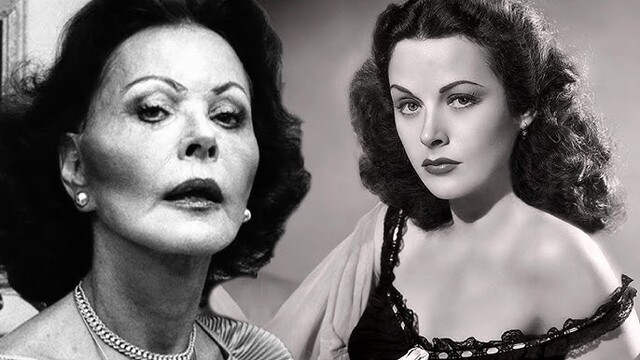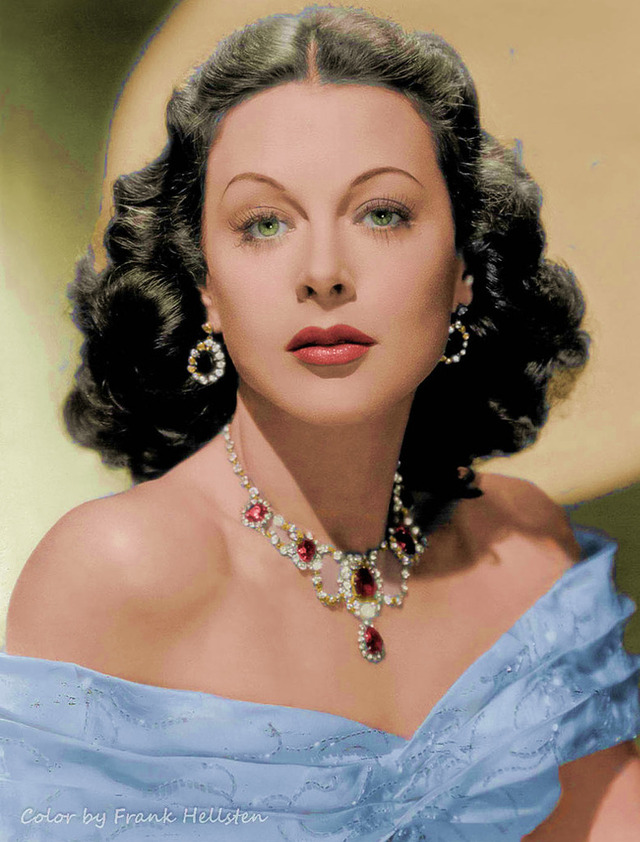Hedy Lamarr, a name synonymous with Hollywood’s golden era, was far more than a captivating actress. While dazzling audiences with her beauty and performances, Lamarr also quietly reshaped the future of technology. As a co-inventor of spread spectrum communication, she laid the groundwork for technologies like Wi-Fi and GPS. Her life was a tale of brilliance, resilience, and innovation—a legacy that continues to inspire.
Early Life: From Vienna to Stardom

Born as Hedwig Eva Maria Kiesler on November 9, 1914, in Vienna, Austria, Lamarr’s journey to stardom was unconventional. As a teenager, her beauty and talent were discovered by an Austrian filmmaker, leading to her controversial role in Ecstasy (1933). This film brought her international attention but also drew criticism for its boldness.
Her first marriage to Fritz Mandl, a wealthy munitions manufacturer, became a turning point in her life. Mandl, who had ties to the Nazis, was controlling and stifled her freedom. Determined to escape, Lamarr fled to the United States, leaving behind her troubled marriage and her past. Soon after arriving in Hollywood, she signed a contract with Metro-Goldwyn-Mayer (MGM), adopting the name Hedy Lamarr. Her debut in Algiers (1938) catapulted her into stardom, marking the beginning of a luminous career.
Video:
A Hollywood Icon
During the 1930s and 1940s, Lamarr became one of Hollywood’s most celebrated actresses. Her stunning performances in films like Lady of the Tropics (1939), Boom Town (1940), Tortilla Flat (1942), and Samson and Delilah (1949) solidified her reputation as a leading lady. Known for her exotic beauty and poise, Lamarr captivated audiences alongside stars like Clark Gable, Spencer Tracy, and Victor Mature.
Despite her success, Lamarr faced challenges. Hollywood often limited her roles to those that emphasized her looks rather than her talent. She was reportedly considered for the lead role in Casablanca (1943), which ultimately went to Ingrid Bergman, a missed opportunity that could have further elevated her career. Even as she thrived in the spotlight, Lamarr yearned for something more meaningful beyond the glitz and glamour of Hollywood.

A Pioneer in Technology: The Secret Communications System
In 1942, at the height of her Hollywood career, Lamarr demonstrated her brilliance in an entirely different field—science. Collaborating with her friend, composer George Antheil, Lamarr co-invented a revolutionary radio frequency-hopping system. Their invention, patented as a “Secret Communications System,” was designed to prevent enemy forces from intercepting Allied messages during World War II.
The duo’s system worked by changing radio frequencies, making it nearly impossible for adversaries to decode transmissions. Although their invention was ahead of its time and initially overlooked, it later became the foundation for modern wireless technologies such as Wi-Fi, Bluetooth, and GPS.

Recognition for this groundbreaking work came decades later. In 1997, Lamarr and Antheil received the Electronic Frontier Foundation (EFF) Pioneer Award. That same year, Lamarr became the first woman to be honored with the BULBIE™ Gnass Spirit of Achievement Award, often referred to as the “Oscars” of inventing. Her contributions to technology cemented her legacy as a visionary thinker who was far ahead of her era.
Personal Life: Triumphs and Turmoil
Lamarr’s personal life was as dramatic as her on-screen roles. She was married six times, with each relationship bringing its own set of challenges. Her second husband, Gene Markey, adopted her son, James, during their marriage. She later had two biological children, Denise and Anthony, with her third husband, actor John Loder.
In 1953, Lamarr became a naturalized U.S. citizen, embracing her new identity with pride. However, her later years were marked by personal struggles, including legal battles over her autobiography, Ecstasy and Me, and accusations of shoplifting in 1966 and 1991. While these incidents drew media attention, they did little to overshadow her achievements as an inventor and actress.

Decline of a Film Career
By the 1950s, Lamarr’s film career began to wane. Her final film, The Female Animal (1958), marked the end of an illustrious chapter in her life. As Hollywood moved on, Lamarr retreated from the limelight, focusing on her family and personal interests.
Her later years were spent in seclusion in Casselberry, Florida. Despite her reclusive lifestyle, Lamarr remained a figure of fascination, with her dual identity as a glamorous star and a scientific innovator capturing public imagination.
Legacy: More Than Just a Pretty Face

Lamarr’s story found renewed interest in the late 1990s and early 2000s. In 2017, the documentary Bombshell: The Hedy Lamarr Story, directed by Alexandra Dean, highlighted her pioneering work in technology and her struggles with addiction and self-worth. The film shed light on how Lamarr’s intellect and contributions had often been overshadowed by her physical beauty.
Her influence also extended to popular culture. A dramatized version of Lamarr appeared in a 2018 episode of the TV series Timeless, which paid tribute to her achievements in both Hollywood and science.
Today, Lamarr’s legacy serves as a reminder that beauty and intellect can coexist. Her contributions to wireless technology have impacted billions of lives, and her story continues to inspire women to pursue their passions, regardless of societal expectations.
Conclusion
Hedy Lamarr was far more than a glamorous actress of Hollywood’s golden age. She was a trailblazer who challenged stereotypes and used her intellect to shape the future of communication technology. From her captivating performances on screen to her groundbreaking invention, Lamarr’s life was a testament to the power of resilience, innovation, and determination. As we marvel at the technologies that keep us connected today, it’s worth remembering the brilliance of Hedy Lamarr—a true star in every sense of the word.



